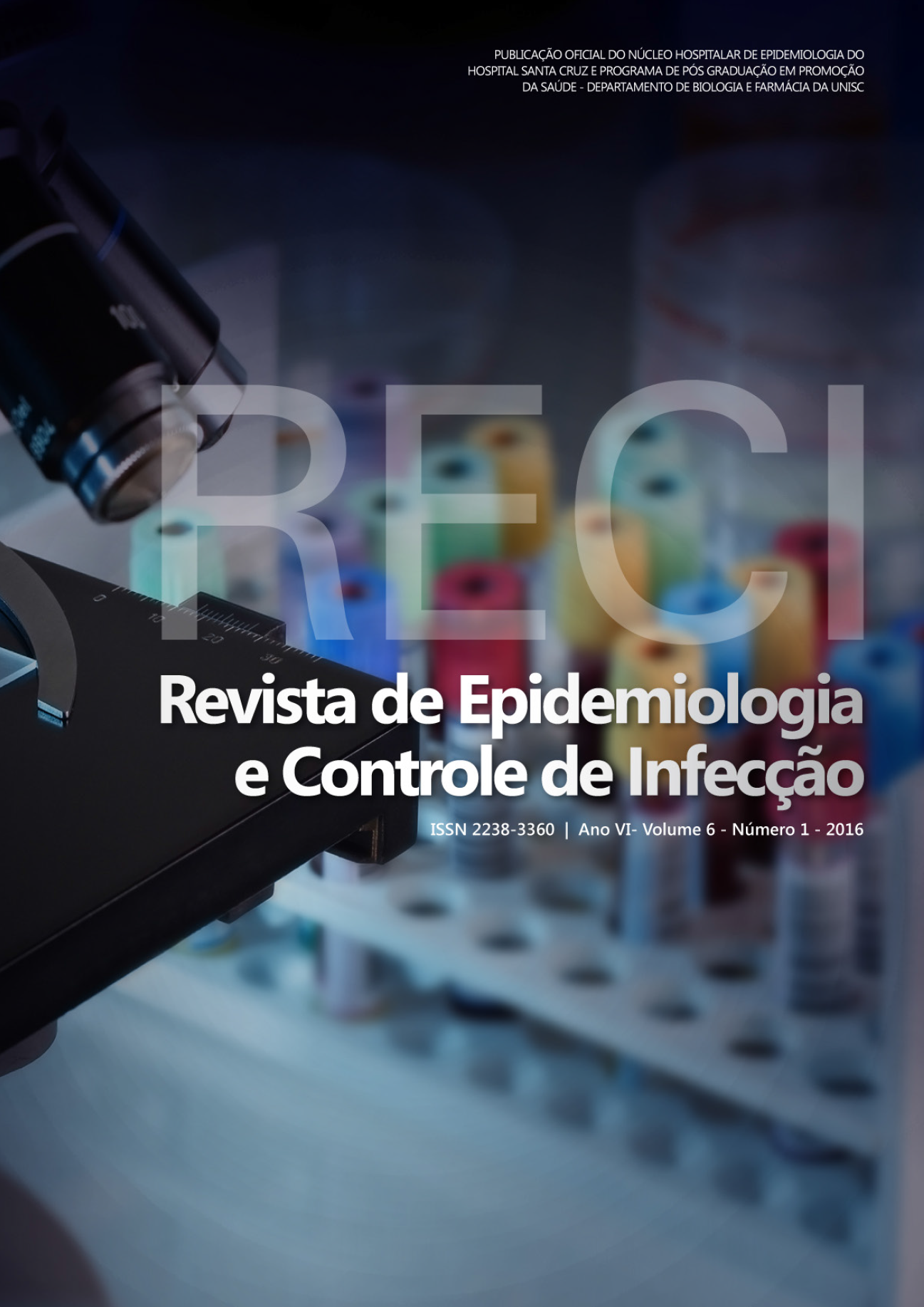Environmental contamination of pediatric ICU: risk factor for opportunistic infection occur?
DOI:
https://doi.org/10.17058/reci.v6i1.6819Abstract
Background and Objectives:Nosocomial infections in pediatrics have shown high levels due to the susceptibility of newborns in acquiring diseases and the emergence of resistant bacteria.These factors, added to the risk of contamination of the hospital environment by epidemiological importance of microorganisms can cause a cross-contamination process.The objective of this study was to evaluate the environmental contamination of the Intensive Care Unit of a Pediatric Hospital in Rio Grande do Sul - Brazil.Methods:Cross-sectional study conducted during the month of March 2011. The researchers used 20sterile swabs, moistened in sterile saline solution, robbed on the surfaces of stethoscopes, monitors, respirators, incubators, tables and supporting electrical outlet. For identification of microorganisms biochemical tests were used. The antimicrobial susceptibility test was performed using Etest method for vancomycin and Kirby Bauer to other antibiotics.Results: Was identified 27 microorganisms: Staphylococcus aureus (51.9%), Streptococcus spp. (18.5%), Staphylococcus spp. (14.8%), Escherichia coli (3.7%), Klebsiellaoxytoca (3.7%), Acinetobacter lwoffii (3.7%) and Enterococcus spp. (3.7%). Of these, 78.6% of isolates of S. aureus were resistant to oxacillin and 100% of Staphylococcus spp. were resistant to this antibiotic. Multidrug resistance was found to isolate A. lowffii.Conclusion:The microorganisms isolated in this study present risks for the patient's health as the health care provider. Interventions for prevention and hygiene are needed, aimed at re-education of the professional team. Only through awareness of all professionals to be able to reduce the spread of microorganisms through cross-contamination. KEYWORDS:Cross Infection. Intensive Care Units.Contamination.Equipment Contamination.Drug Resistance, Microbial.Downloads
Downloads
Published
How to Cite
Issue
Section
License
The author must state that the paper is original (has not been published previously), not infringing any copyright or other ownership right involving third parties. Once the paper is submitted, the Journal reserves the right to make normative changes, such as spelling and grammar, in order to maintain the language standard, but respecting the author’s style. The published papers become ownership of RECI, considering that all the opinions expressed by the authors are their responsibility. Because we are an open access journal, we allow free use of articles in educational and scientific applications provided the source is cited under the Creative Commons CC-BY license.


